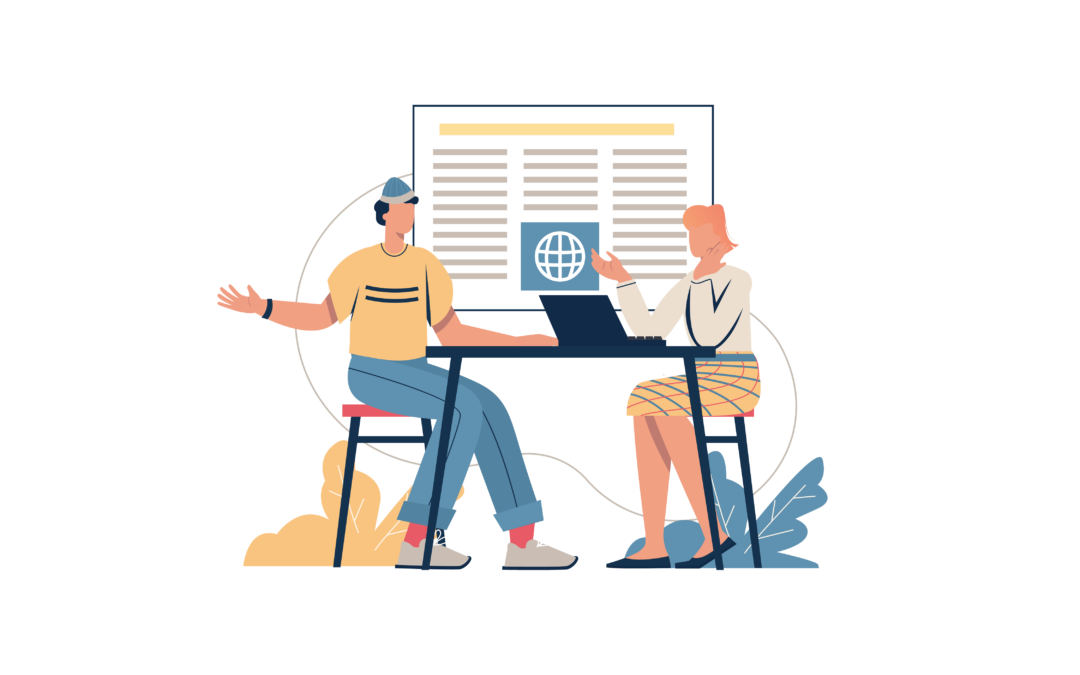There’s a method to the madness when it comes to how we approach brand strategy at Emotive Brand. We look at the bigger picture, get all of the necessary information, and dive headfirst into making something that speaks clearly to what our clients need. We asked our design team to shed some light on what works for them when it comes to alignment and how our clients can best prepare for a new project.
Design is a team sport and a new site is often the vehicle through which brands are launched. So, no matter how big, small, long-term, or short-term the project, the success of your end product depends on making sure everybody is on the same page from beginning to end.
Creating a new website depends on alignment first and foremost. If our stakeholders aren’t with us every step of the way, then we’ll hit more bumps in the road and even more roadblocks than expected.
Without insight into customer needs, business goals, and more concrete instruction, our designers will be left making assumptions, which are never a good thing. There’s a big difference between a brief for a site that is more visually appealing and a site that drives growth.
Creative flexibility, stakeholder alignment, and business expectations all hold the same level of importance. We call it the trifecta of any successful design project, and websites are no exception. The best way that we ensure all three of these things are in play with equal importance is by establishing expectations from the beginning.
Myth: The more creative freedom you give your designer, the better.
Truth: The more creative direction you give your designer, the better.
The less guidance you or your fellow stakeholders give, the more room the designer has to design whatever their heart desires — this can lead to a product that doesn’t really make any sense for your company’s brand. In this case, endless creative freedom means the project risks becoming too personal to the designer and less about your company’s business goals.
Pointing a designer in the direction of your brand guidelines, core messaging, and use of language gives them a starting point to build on what’s been done to date, information to better anticipate user needs, and the ability to craft a new digital brand narrative without being overly prescriptive, which often drives bad design outcomes.
EB’s Tricks for Alignment
Alignment is important. We’ve hammered that point in, but how do we at Emotive Brand actually ensure alignment between our creative team, our clients, and stakeholders? What action steps can you take?
Step #1 Set the table: lay it all out on the table so you can effectively manage your time. This means data, expectations, and whatever else our team or your design team needs to know before starting on the project.
Step #2 Data first, opinions second: identify any problems early on and make sure to base solutions off of data. You’ll stay aligned on business goals and help the designer figure out exactly what you expect from our team and the project. By centering the conversation around data, you’ll create an environment in which assumptions are challenged and outcomes are more strategic.
Step #3 Embrace feedback: it’s important to create a dialogue between the design team and your clients. This creates an opportunity to take them along on the journey, give insight into your decisions, and strengthen communication.
Step #4 Side effects may include: be sure to communicate the potential effects and benefits of design decisions as both problems and new opportunities emerge. Not everything will be clear from the start and ambiguity often turns into insight midstream.
Step #5 Empathy matters: by seeing things through the eyes of a website user we’ve learned an important lesson in empathy and are better able to center the conversation around value creation, which makes it easier for clients to see the value of our design decisions and discern who might benefit most from them.
Step #6 Be inclusive and flexible: any design process requires one to embrace ambiguity, venture into the unknown, and take people along for the journey. Without these features, it’s unlikely the project will make it across the finish line in one piece.
Stakeholder alignment is often an art form more than a science. While there’s no one-size-fits-all approach, overall, it’s most important to communicate web design ideas in ways that speak to what’s most important to your stakeholders. Without sensitivity to stakeholder and customer needs, a website redesign will likely never reach its full potential.






Good post and it seems very informative to me.